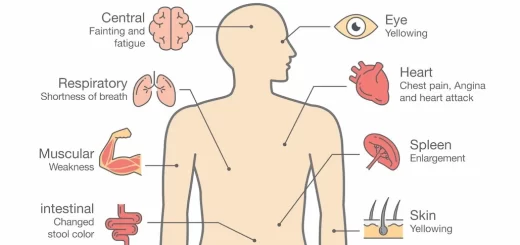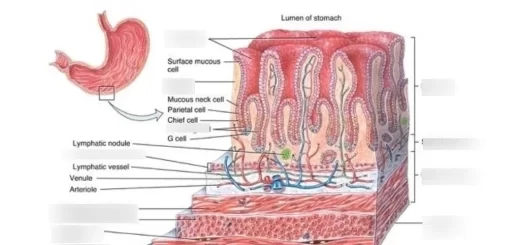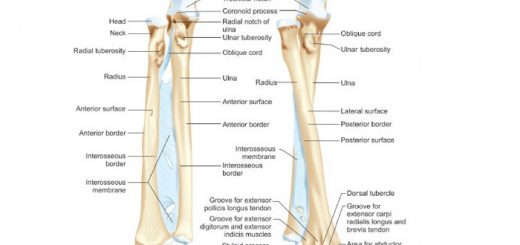Respiratory system function, organs, structure, anatomy and conducting portion
The respiratory system allows to you inhale and exhale, it allows you to talk and to smell, It brings air to body temperature and moisturizes it to the humidity level your body needs, It delivers oxygen to the body cells, It removes waste gases, including carbon dioxide, from the body when you exhale, It protects your airways from harmful substances and irritants.
Development of the respiratory system
When the embryo is approximately 4 weeks old, the respiratory diverticulum (lung bud) appears as an outgrowth from the ventral wall of the foregut. The endoderm of the foregut will give rise to the epithelium of the internal lining of the larynx, trachea, and bronchi, as well as that of the lungs. Splanchnic mesoderm will give rise to the cartilaginous, muscular, and connective tissue components of the trachea and lungs.
Development of trachea
- Initially, the lung bud is communicating with the foregut.
- When the diverticulum expands caudally, two longitudinal ridges, (the tracheoesophageal ridges) separate it from the foregut.
- These ridges fuse to form the tracheoesophageal septum.
- The foregut is divided into a dorsal portion, the esophagus, and a ventral portion, the trachea and lung buds.
- The respiratory primordium communicates with the pharynx through the laryngeal orifice.
Bronchial tree and lung development:
The blind caudal end of the trachea will dilate and give lung bud which will divide into right and left buds.
Development of right lung
Right lung bud (1ry) will divide into three branches (2ry):
- Upper lateral branch develops into the upper lobe bronchus.
- Stem: will give the lower lobe bronchus
- Lower lateral branch: will give the middle lobe bronchus.
Upper lobe bronchus will divide into three branches (3ry):
- Apical
- Anterior
- Posterior
Lower lobe bronchus will divide into five branches (3ry):
- Apical basal
- Anterior basal
- Posterior basal
- Medial basal
- Lateral basal
Middle lobe bronchus will divide into two branches (3ry):
- Medial
- Lateral
Development of left lung
Left lung bud (1ry), divides into two branches (stem &one lat. Branch):
- One lat. Branch (2ry) will give the upper lobe bronchus.
- Stem will give the lower lobe bronchus.
1- Upper lobe bronchus will give two branches, upper& lower (3ry):
- Upper: Apicoposterior, and Anterior.
- Lower (lingular): Superior, and Inferior.
2- Lower lobe bronchus: four branches (3ry):
- Apical basal
- Anteromedial basal
- Posterior basal
- Lateral basal
Each tertiary bronchiole divides repeatedly till 18 generations. The final generation dilates to form the alveoli. An additional six divisions form during postnatal life, (18 + 6 = 24 generations).
Congenital anomalies:
- Tracheo-oesophageal fistula: No separation between the trachea and oesophagus. This may lead to: Milk will pass to the lung causing pneumonia. Air passes to the stomach causing its dilatation and respiratory impairment.
- Variation in the number of lobes of the lung.
- Congenital cysts of a lung: Due to dilatation of terminal bronchioles.
- Congenital atelectasis of a lung or lobe: Due to obstruction of 1ry or 2ry bronchioles.
- Respiratory distress syndrome: Due to deficiency of surfactant secreted from type Il pneumocytes causing failure of dilatation of alveoli; this could lead to death.
Histology of the respiratory system
The respiratory tract consists of two portions:
- The conducting portion is the proximal portion, where air conduction and conditioning take place. It includes the nasal cavity, the pharynx, the larynx, the trachea, and a branching system of bronchi and bronchioles which are in turn continuous with the respiratory portion in the lungs.
- Respiratory portion is the distal portion, where the exchange of gas between the blood and the inspired air takes place. It includes the respiratory bronchioles, alveolar ducts, and alveoli.
Conducting portion
1- Respiratory mucosa
Most of the nasal cavity, the paranasal sinuses, the nasopharynx, the larynx, the trachea, and bronchi are lined by respiratory mucosa which is characterized by:
- Ciliated pseudostratified columnar epithelium with goblet cells.
- Lamina propria, vascular connective tissue firmly attached to the perichondrium and periosteum of the underlying cartilage or bone.
Mucus provided by goblet cells and by the mixed muco-serous glands in the lamina propria forms a mucous blanket that is propelled by the ciliary action towards the pharynx where trapped dust particles are swallowed instead of being inhaled. The lamina propria contains plasma cells, mast cells, and lymphoid nodules that provide an immunological protective function.
2- Olfactory mucosas
It is a specialized region of the nasal mucosa for the sense of smell, located at the roof of the nasal cavity. It is formed of non-ciliated pseudostratified columnar epithelium without goblet cells. The epithelium consists of 3 kinds of cells:
- Olfactory cells: modified bipolar neurons with their apical “luminal” dendrites forming olfactory vesicles with olfactory cilia while their axons form the olfactory nerve fibers.
- Supporting columnar cells.
- Basal cells: they are the stem cells that can give rise to both the supporting cells and the olfactory cells (the only site of regenerating neurons in adults).
The underlying lamina propria contains Bowman’s glands with their serous secretion dissolves the air-borne odorants, thus enhancing the ability of olfactory cells to detect scents.
3- Larynx
Larynx is a short passage for air between the pharynx and the trachea. It is kept open by the cartilages present in its wall. Two pairs of mucosal folds project inwards from the wall; the upper is the vestibular folds (false vocal cords) while the lower is the vocal cords.
The core of the vocal cords has no glands and is made up of elastic fibers and striated muscle fibers (vocalis muscle) arranged in parallel bundles. The anterior (lingual) surface of the epiglottis and the vocal cords are covered with non-keratinized stratified squamous epithelium. The rest of the larynx is lined by respiratory mucosa.
4- Trachea
Trachea is a flexible tube continuous with the larynx above and bifurcates at its lower end into two main extrapulmonary bronchi. The wall of the trachea has the following histological structure:
Mucosa
The trachea is lined by respiratory mucosa, composed of:
a- Tracheal epithelium: formed of 5 types of cells:
- Ciliated columnar cells.
- Goblet cells: they have an expanded apical region packed with mucinogen granules.
- Basal cells: short pyramidal cells. They are stem cells for formation of new ciliated and goblet cells.
- Brush cells: columnar cells with blunt microvilli at their luminal border They act as sensory receptors as they establish synaptic contact with an afferent nerve ending.
- Small granule cells: their cytoplasm contains secretory granules and they belong to the diffuse neuroendocrine system.
b- The lamina propria: loose connective tissue contains lymphoid nodules. The elastic fibers are condensed to form an elastic membrane separating the lamina propria from the submucosa.
Submucosa
It is similar to the lamina propria with mixed mucoserous submucosal glands. Their ducts extend through the elastic lamina to open onto the surface of the mucosa.
Cartilage layer
The tracheal wall is reinforced by 16-20 C-shaped rings of hyaline cartilage. The rings are separated by fibro-elastic connective tissue to prevent over-distension of the tracheal lumen. The posterior wall of the trachea, anterior to the esophagus contains a band of transversely arranged smooth muscle fibers (trachealis muscle) that connects the two ends of the C-shaped cartilaginous rings.
Adventitia
It is the outer layer, formed of fibro-elastic connective tissue that binds the trachea to the adjacent structures. It contains the large blood vessels and nerves that supply the tracheal wall.
5- Bronchi
The structure of the extrapulmonary bronchi is similar to the trachea except that the cartilaginous rings completely encircle the lumen. intrapulmonary bronchus has the following histological structure:
Mucosa
- Bronchial epithelium: ciliated pseudostratified columnar epithelium with goblet cells, similar to that of the trachea. The height of the epithelial cells decreases as the bronchi decrease in diameter.
- The lamina propria: contains lymphoid nodules, particularly at the branching points of the bronchial tree.
Musculosa
Smooth muscle fibers are spirally arranged encircling the entire lumen beneath the mucosa.
Submucosa
It contains mixed mucoserous glands that lie external to the muscle layer.
Cartilage layer
It is formed of discontinuous plates of hyaline cartilage encircling the bronchial lumen. They lie external to the muscle layer where they are separated by the glands of the submucosa.
Adventitia
Formed of fibro-elastic connective tissue that is continuous with that of the adjacent structures such as the pulmonary vessels.
6- Bronchioles
As the bronchi become smaller, the smooth muscles and elastic fibers become relatively more abundant while cartilage and other connective tissue are reduced. Branches of the bronchial tree that enter the lung lobules are the bronchioles, they measure 1mm or less in diameter.
Larger bronchioles branch repeatedly, giving rise to the smaller terminal bronchioles (less the 0.5mm in diameter), these are the last parts of the air-conducting portion that finally gives rise to the respiratory bronchioles. The bronchiole has the following histological structure:
Mucosa
It is thrown into prominent longitudinal folds due to the contraction of the smooth muscle fibers during the fixation of the histological specimen.
a- The bronchiolar epithelium: larger bronchioles are lined by ciliated pseudostratified low columnar epithelium that gradually transforms into simple columnar epithelium with no goblet cells. It is formed of the following types of cells:
- Ciliated cells: the cilia gradually disappear and the cells become cuboidal as the bronchioles become smaller.
- Non-ciliated Clara cells: They have a dome-shaped apical surface with microvilli and secretory granules. They increase in number as the ciliated cells decrease along the length of the bronchioles. They secrete a fluid layer of lipoprotein that is continuous with the surfactant layer of the alveoli; this layer helps to keep the bronchioles patent during expiration.
- Neuroendocrine cells: they are present either singly (small granule cells) or in groups (neuroepithelial bodies). These cells give locally active secretion, regulating the airway and vascular caliber.
b- Bronchiolar lamina propria: formed of a thin layer of loose connective tissue rich in elastic fibers.
Musculosa
It is formed of prominent circularly arranged smooth muscle fibers and a network of elastic fibers.
Adventitia
It is formed of a thin layer of connective tissue rich in elastic fibers, binding the bronchiole to the surrounding lung parenchyma. Bronchioles have no cartilaginous plates, no lymphoid nodules, and no glands in their walls.
Mechanics of ventilation, Structures of Respiratory system and Functions of conducting zone
Histology of respiratory portion, Alveolar epithelium, Interalveolar septum and Fetal lung
Diaphragm anatomy, structure, function, Phrenic nerves and Nerves of the thorax
Lung structure, borders, Lobes, Fissures and Broncho-pulmonary segments
Trachea, Major Bronchi, Thoracic cavity structure, function and anatomy
Larynx structure, function, cartilages, muscles, blood supply and vocal folds



